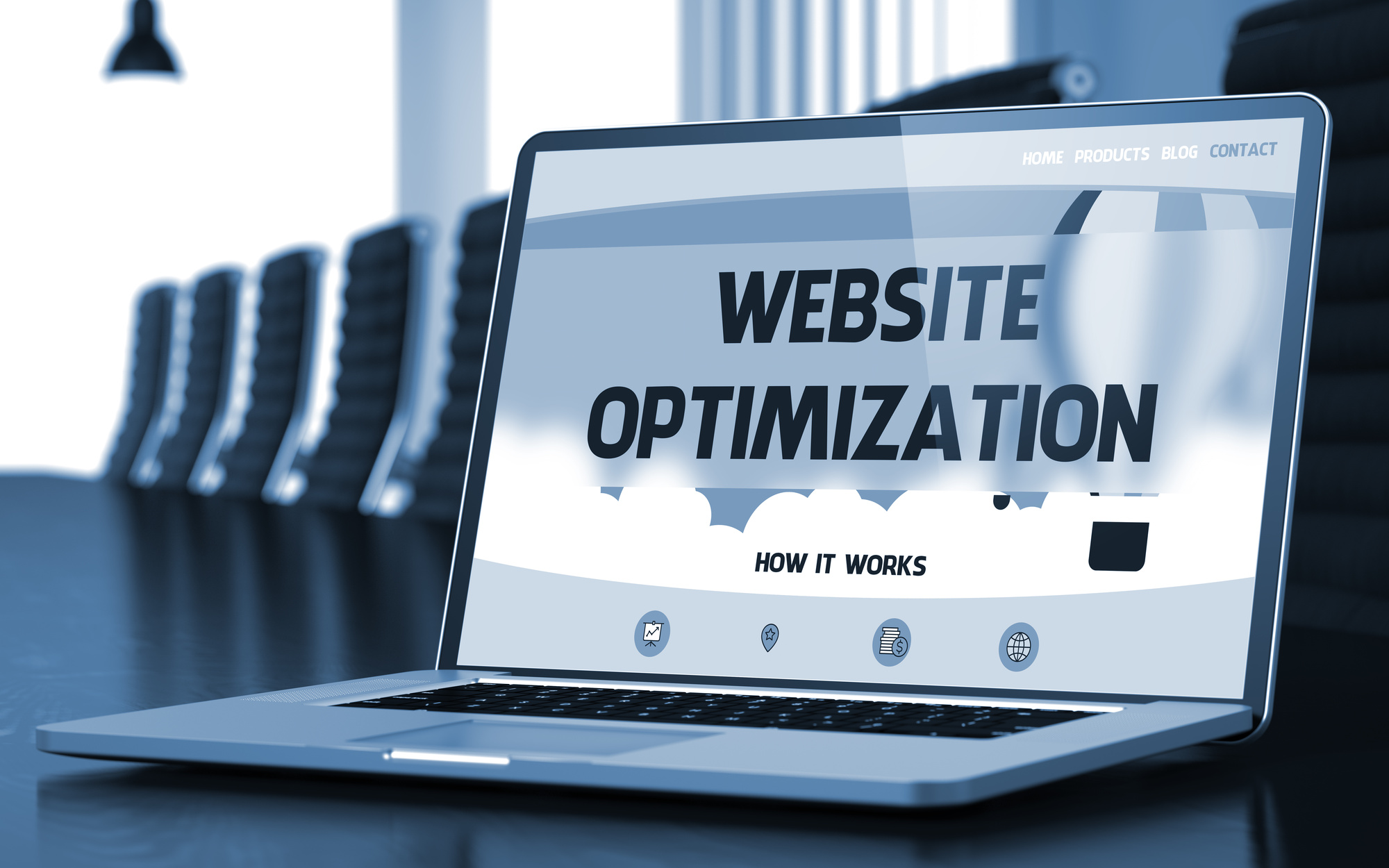It may come as a surprise that there are around 1.12 billion websites on the internet today.
Given the number of websites out there, businesses must still be able to find their way out into the digital world. Out of these 1.12 billion websites, 82% are inactive.
This already says a lot about how competitive the digital world is. And for businesses to make the most out of the internet, website optimization matters a lot. Read on to know the dos and don’ts of website optimization.
Contents
- 1 Do Optimize Your Site for Mobile
- 2 Don’t Overload Your Site With Content
- 3 Do Create Multiple Call-to-Action (CTA) Buttons Throughout the Site
- 4 Don’t Forget to Monitor Performance With Analytics
- 5 Do Use Quality Content
- 6 Don’t Neglect Page Loading Times
- 7 Do Use Keywords Throughout Your Content
- 8 Don’t Make Website Updates Without Testing the Changes
- 9 Do Enhance On-Page SEO Factors
- 10 Don’t Use Too Many Redirects
- 11 Do Identify Your Target Audience
- 12 Don’t Use Excessive Blinking or Animation
- 13 Do Keep Your Website Secure and Protected
- 14 Don’t Overcrowd Your Pages With Ads
- 15 Making Smart Website Optimization for Business Success
Do Optimize Your Site for Mobile
Optimizing your website for mobile is important to ensure your customers have a great experience. Start by doing a mobile-friendly test to make sure your website can be viewed effectively on mobile devices. Make sure fonts and images resize correctly.
Additionally, buttons should be large enough to be easily tapped. Make sure to organize the content in a user-friendly way. Consider using plugins that can detect and convert desktop content into mobile formats.
Lastly, test your site on a variety of different devices to ensure everything looks the way you intended. With these tips, it will be easier for mobile users to access your site.
Don’t Overload Your Site With Content
Too much content on a website is an absolute killer. It can overload users and overwhelm them. It also makes it difficult to identify the most important elements of a website.
Too much unnecessary content also slows down the loading time of the page. This can cause visitors to move on before they have a chance to explore the meaningful content.
Content overload can also create a cluttered look. This leads visitors to skim the primary information and ignore the other content. Striking a balance between too much and too little content on a website is key.
The ideal website offers enough content to present the necessary information while avoiding content overload. Having the right amount of meaningful, relevant content is essential to driving conversions and website traffic.
Do Create Multiple Call-to-Action (CTA) Buttons Throughout the Site
Call-to-action buttons are essential elements of any website. They encourage users to take specific actions. This can include signing up for a newsletter, making a purchase, or downloading an ebook.
By including multiple CTAs throughout the site, you create multiple opportunities for users to engage with your product or service. Put them in prominent places like the product page or home page.
Additionally, use other tactics like CTAs on blog posts and internal links to keep users on the site longer. Make sure CTAs are visible and easy to spot. Utilize colors that stand out and language that is concise and inspiring.
When clicked, the button should lead users to the correct page. An effective CTA can be the difference between an engaged user and one who looks elsewhere, so it’s important to get it right. Taking the time to create multiple CTAs throughout the site is an effective way to maximize user engagement.
Don’t Forget to Monitor Performance With Analytics
Monitoring performance with analytics is an effective way to measure how well your website is performing. Analyzing data will highlight areas where you are successful. It will also bring to light any challenges that may be existing.
Web analytics help to track website usage and provide insights into how visitors interact with a website. This can include where they go, how long they stay, what keywords they are using to find the website, and more.
You can use this data to optimize website design and content. This data will also allow you to make more informed decisions regarding the direction of your website. This will help the business increase visitor engagement and achieve greater success.
Monitoring performance with analytics is a crucial step in improving the overall success of your website. This will help you reach your goals in a more efficient manner.
Do Use Quality Content
Using quality content means you are providing valuable information or knowledge to your readers. It provides an engaging and captivating experience for the reader that leaves a lasting impression.
It will draw readers in and make them want to stay. It also helps to increase credibility and reputation. It will demonstrate that you are knowledgeable about the topics you’re covering.
It should be organized and informative, with an effort to provide helpful resources. A well-crafted article can be easily shared across multiple channels and can help build trust with customers. It ensures readers keep coming back for more information.
Quality content means content that is accurate, relevant, and engaging for your reader. It doesn’t have to be complex or dense, but it needs to be thorough and convey a desirable message. Ensure that any information provided is valid and well-researched.
Don’t Neglect Page Loading Times
It is important not to neglect page loading times when designing a website. Slow-loading pages can cause visitors to become frustrated or bounce. This could lead to a decrease in conversions and sales.
Pages should be kept as lightweight as possible and designed to minimize loading time. Make sure to compress images and do not overuse plugins.
Implement content delivery networks to decrease the distance between the user and the website’s server. This will help increase loading speed.
Hosting and caching are also important, as a good server can improve the speed of loading pages. All of these solutions can create a better, faster user experience, and ultimately improve website traffic and conversions.
Do Use Keywords Throughout Your Content
When writing content for websites, you should always use keywords throughout your content. Keywords are terms or phrases related to the topic of your content. They can draw the attention of search engine visitors.
Using keywords properly ensures that your content is visible to users searching for a specific topic. An effective keyword placement strategy should include including keywords in the title, URL, headings, image descriptions, and even in the first paragraph.
Additionally, you should focus on using relevant keywords in all of your content. This includes blogs, videos, and pages. Doing this will help you reach a larger audience and ensure that your content consistently appears in search results.
Don’t Make Website Updates Without Testing the Changes
Failing to do this can lead to numerous issues. This could include broken links, broken styling, issues with database access, and numerous other technical problems.
Make sure to test the changes on multiple devices and platforms. This is to ensure compatibility with the various browsers, operating systems, and configurations used by site visitors. This can help to ensure the website runs as efficiently as possible post-update.
Lastly, people responsible for making updates should review the changes internally before they’re launched publicly. This will help to minimize potential issues.
Do Enhance On-Page SEO Factors
On-Page SEO is a critical component when it comes to the success of your website. It helps to increase traffic to your website and the chances of your website appearing at the top of search engine results. It includes factors such as content optimization, keyword optimization, meta tags, and title tags.
To enhance these factors, you should ensure that your content is of quality, up-to-date, and relevant. You should research and strategically implement relevant keywords throughout your website.
If you’re in the self storage business, for example, include high-volume keywords related to self-storage, such as residential, commercial, and long-term. You should also use meta tags and title tags to further optimize web page content. To help you with this, check out this article on SEO for self storage.
Lastly, make sure to check for broken links and fix any errors you may find. With the implementation of these factors, you can increase the visibility of your website. You will also gain an edge over your competition in the search engine results.
Don’t Use Too Many Redirects
Redirects are important for any website, as they provide users with an easier path to the page they are looking for. However, using too many redirects can create a poor user experience. It can also lead to a longer wait time when users click a link.
Additionally, too many redirects can be difficult to manage for webmasters. It can also cause confusion when trying to analyze website performance.
To ensure an optimal experience, it’s important to limit the number of redirects used on a website. Use only what is necessary for its functionality. Make sure to review all redirects regularly to make sure they’re still necessary, and if not, remove them.
Do Identify Your Target Audience
Your target audience is your core group of consumers that you are directly appealing to. They should be the most important demographic in your strategy. Reaching them with the right type of message will ensure your efforts are not wasted.
Knowing who your target audience is will allow you to tailor your message to that demographic. This will also enhance the chances they’ll respond positively.
Your research should include considering their demographics, such as age and geographic location, as well as which channels they prefer for consuming content. The more you know about your audience, the better you can connect with them and understand their needs better.
Don’t Use Excessive Blinking or Animation
Excessive blinking and animations in web design often cause more harm than good. They can be distracting, especially if used in the wrong context. They can also be bothersome or even overwhelming if the animations are too frequent.
Animations can also take a toll on a user’s system resources if not properly optimized. This causes the webpage to run slowly and appear choppy or glitchy on certain devices. For all these reasons it’s best to avoid using too much animation or blinking in web design.
Do Keep Your Website Secure and Protected
Secure and protect your website from malware attacks or data breaches by taking simple steps. Start with creating strong passwords and change them regularly using a mix of uppercase and lowercase letters, numbers, and special symbols.
Make sure the application you use to build your website is regularly updated. Use antivirus software to protect the website from malicious viruses. Doing this will close security loopholes that adversaries can exploit in order to gain access to your website’s data.
Back up the data of your website onto an external storage drive in case of a malfunction or a hacker. Utilize security measures such as SSL certificates, firewalls, and two-factor authentication. Educate yourself and your staff on the dangers of malicious hackers and teach them how to recognize phishing emails.
Lastly, use an offsite hosting provider to ensure the website is safe and secure. Following these measures will help ensure your website remains secure and protected at all times.
Don’t Overcrowd Your Pages With Ads
When it comes to ads, it is important to be mindful of how much space your pages use. You should not overcrowd your pages with ads as customers may find it too intrusive and not enjoyable. Too much advertising can be overwhelming and take away from the overall user experience.
When it comes to creating ads, make sure the ads are relevant to the page and that they’re placed strategically. This means that the design of the page will not be sacrificed for the sake of advertising.
Additionally, ensure ads do not interfere with the website navigation and the page layout. The quality of user experience should come before ads, so keep that in mind when placing ads. It is also important to remember that while ads can bring in revenue, it is only if your site is enjoyable that customers will stay on.
Making Smart Website Optimization for Business Success
Websites are the perfect place to reach your audience and increase leads. To be successful, you must optimize your website for mobile, search engines, and content.
Following the Dos and Don’ts of website optimization can equip you with the tools needed to build an effective website. Don’t delay, make the most of your website today and reap the rewards of an optimized website.
If you want to learn more about the business world, technology, and so much more, continue to visit the site. It’s the best place to get informed.



